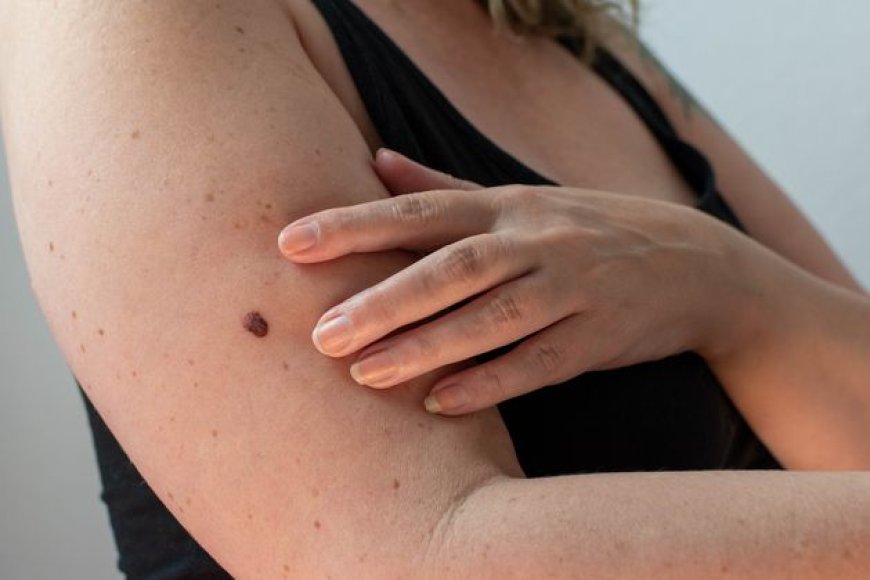Understanding Itchy Red Bumps: Insect Bites or Skin Condition?
Learn about itchy red bumps that resemble insect bites on your skin and your daughter's. GP Jennifer Grant explains that it could be papular urticaria, a common skin condition triggered by insect bites. Discover how to manage the itching and skin lesions effectively.

GP Jennifer Grant answers your medical queries
Question: I have lots of moles on my arms and legs and they start off like an insect bite. It is the strangest thing. I notice that my 12-year-old daughter seems to be developing these also – she squeezes them and they get itchy and then they turn into these same red moles. What do you think this could be?
Dr Grant replies: Given the warm weather and the fact that there are plenty of insects flying around at this time of year, I suspect what you are describing is possibly an allergic reaction to an insect bite leading to papular urticaria and not a mole/pigmented lesion.
Papular urticaria is a very common benign skin condition. This is a type of hypersensitivity disorder that occurs when insects like fleas, mosquitoes, or even bed bugs, lead to recurrent and sometimes chronic, itchy papules on exposed areas of skin. Areas most commonly affected include the arms, lower legs, upper back and the scalp.These erythematous (red) skin lesions are typically about 1cm in diameter and can become persistent, papular (slightly raised off the skin surface) and/or nodular (round or circular bump) with time.
What’s interesting about this condition is that when new insect bites lead to new skin lesions, renewed skin itching in an affected area may reactivate older lesions, leading to a chronic cycling disorder that may last from months to years. The good news is that it can be managed with Over-The-Counter (OTC) non-sedating antihistamines for itch (pruritus), and the use of mild or medium strength topical corticosteroids applied to skin lesions. These skin lesions will eventually resolve spontaneously over time.
There are many other possible skin disorders to consider, albeit they are not as common, including superficial folliculitis, which is an inflammation of the hair follicles typically caused by bacterial skin infection, particularly staphylococcus aureus.
Folliculitis can also be triggered by other factors such as hot humid climates, irritation (shaving), friction (tight fitting clothes or vigorous scrubbing) or occlusion of the hair follicles. Commonly affected sites include the face, scalp, neck, arms, legs and buttocks. Patients with underlying skin disorders such as acne or eczema are more prone to folliculitis. Treatment involves topical antibiotic cream, oral antibiotics in severe cases, avoidance of repeated skin irritation and good skin hygiene.
Another possible skin infection by herpes or varicella-zoster virus involving just a few papules or vesicles can mimic insect bites.
Primary infection is known as chicken pox and generally occurs in children. Reactivation of the virus results in shingles in adults generally triggered by stress, weakened immune system due to medication/cancer, or older age groups, especially over 50 years old. The rash is generally painful, blistering and preceded by itching/tingling, occurs on one side of the body following a path of a nerve. Symptoms are localised to a specific dermatome, an area of skin supplied by a single spinal nerve. The skin lesions tend to crust over and heal within a few weeks but often pain medication and oral antiviral medication can help reduce the severity and duration of the infection if treatment is started promptly.
Lastly, erythema multiforme (EM) is worth considering as it is also an acute, immune-mediated condition characterised by the appearance of distinctive target-like lesions on the skin. Initial skin lesions may begin as round, erythematous (red) papules (slightly raised off the skin surface) that evolve into classic target lesions that consist of three components, namely, a dusky, central area, a dark red inflammatory zone surrounded by a pale ring of oedema (swollen skin), and an erythematous (red) halo on the extreme periphery of the lesion.
The particular variant of this disorder I am referring to is erythema multiforme minor, meaning it is without (or with only mild) mucosal disease (and without associated systemic symptoms). Once again, this disorder is most commonly triggered by skin infection, but this time the most common infection being with herpes simplex virus (type 1 of this virus is the common cold sore virus). EM is usually self-limited, resolving within weeks, however, in a minority of cases, the disease can recur frequently over the course of years.
Dr Jennifer Grant is a GP with Beacon HealthCheck
What's Your Reaction?
 Like
0
Like
0
 Dislike
0
Dislike
0
 Love
0
Love
0
 Funny
0
Funny
0
 Angry
0
Angry
0
 Sad
0
Sad
0
 Wow
0
Wow
0

























































































































































































